Today’s Current Affairs: 8th July 2025 for UPSC IAS exams, State PSC exams, SSC CGL, State SSC, RRB, Railways, Banking Exam & IBPS, etc
Table of Contents
National Biobank:
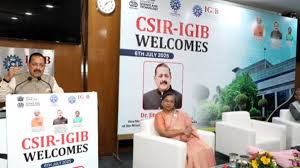
The Union Minister of State (Independent Charge) for Science & Technology inaugurated the state-of-the-art Phenome India “National Biobank” at the CSIR-Institute of Genomics and Integrative Biology (IGIB).
- National Biobank will serve as the backbone of a nationwide cohort study, collecting comprehensive genomic, lifestyle, and clinical data from 10,000 individuals across India.
- It is tailored to capture the country’s unique diversity—across geography, ethnicity, and socio-economic backgrounds.
- It is designed to be a long-term, data-rich study tracking the health trajectories of individuals over several years.
- It will help scientists uncover disease patterns, gene-environment interactions, and response to therapies—all within the Indian context.
- It is launched under the Phenome India Project.
- Researchers believe the initiative will aid early diagnosis, improve therapeutic targeting, and bolster the fight against complex diseases such as diabetes, cancer, cardiovascular ailments, and rare genetic disorders.
- Phenome India Project is officially named Phenome India-CSIR Health Cohort Knowledgebase (PI-CheCK) is an initiative launched by the Council of Scientific and Industrial Research (CSIR) on December 7, 2023. The main objective of the project is to develop India-specific risk prediction models for cardio-metabolic diseases including diabetes, liver diseases, and cardiac diseases.
Tokara Islands:
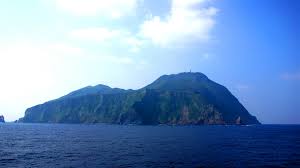
More than 1,000 earthquakes have rattled the Tokara Islands in southern Japan over the past two weeks.
- The Tokara Islands are a small archipelago in Japan, south of Kyushu and north of the Amami Islands.
- They are also sometimes known as the Toshima Islands, and the name is preserved in the name of the administrative division, Toshima-mura, that covers them.
- It consists of seven inhabited islands (from north to south: Kuchinoshima, Nakanoshima, Suwanosejima, Tairajima, Akusekijima, Kodakarajima, and Takarajima) and five uninhabited islands (Gajajima, Kogajajima, Kojima, Kaminonejima, and Yokoatejima).
- As a permanently inhabited municipality stretching over an area of about 160 kilometers, Toshima is “Japan’s longest village.”
- Nakanoshima is the largest island of Toshima Village in both area and population.
- Mount Otake dominates the northern section of Nakanoshima. At 979 meters, it is the highest mountain in the island group.
- It lies between the subtropical and temperate zones, with an average annual temperature of 20ºC.
- The weather is warm, and nearly all areas are frostless. The annual rainfall is about 2,700 millimeters.
- The islands are situated in one of the most seismically active regions of the world.
Gini Index:
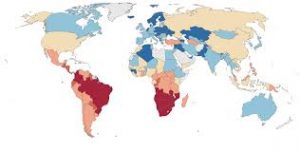
India has emerged as the world’s fourth most equal society, with a Gini Index of 25.5, outpacing all G7 and G20 nations, according to the World Bank.
- According to the recent World Bank report, India’s Gini Index stands at 5, placing it as the fourth most equal country globally, behind only the Slovak Republic, Slovenia, and Belarus.
- This performance not only surpasses regional peers like China, which holds a Gini score of 35.7, but also positions India ahead of every G7 and G20 nation in terms of income equality.
- It marks a steady improvement from a Gini score of 8 in 2011 to 25.5 in 2022, signalling meaningful gains in bridging income gaps over the past decade.
- The Gini index, also called the Gini coefficient or Gini ratio, determines a nation’s level of income inequality by measuring the income distribution or wealth distribution across its population.
- The Gini index was developed in 1912 by Italian statistician Corrado Gini.
- The coefficient of the Gini index ranges from 0 (or 0%) to 1 (or 100%), with 0 representing perfect equality and 1 representing perfect inequality.
- To offer two hypothetical examples, if a nation were to have absolute income equality, with every person earning the same amount, its Gini score would be 0 (0%).
- On the other hand, if one person earned all the income in a nation and the rest earned zero, the Gini coefficient would be 1 (100%).
- Mathematically, the Gini coefficient is defined based on the Lorenz curve.
- The Lorenz curve plots the percentiles of the population on the graph’s horizontal axis according to income or wealth, whichever is being measured.
- The cumulative income or wealth of the population is plotted on the vertical axis.
- The Gini index is not an absolute measure of a country’s income or wealth. The coefficient only measures the dispersion of income or wealth within a population.
Very Massive Stars:

A new study suggests that ‘Very massive stars’ or ‘very luminous stars’ may be emitting a significantly higher amount of material during their lifespan.
- These are those stars that have over 100 times the mass of the Sun.
- They have a much higher mass than the Sun, they use their nuclear fuel at a much higher rate, making their average lifespan only a few million years.
- Once their nuclear fuel is exhausted, very luminous stars collapse to form black holes.
- These stars produce stellar wind that is powerful enough to blow their own outer layer into space.
- These stars, despite their short lifespan, still influence the region around them.
- Their powerful stellar winds can push newly formed elements into their surroundings. While most form new stars, elements key to life, such as carbon and oxygen, are also emitted.
- In spite of their distance from our Earth, they still bear an influence on it.
- These stars can be considered the predecessor to black holes. This occasionally leads to black hole binaries, where two black holes orbit around each other.
- These cause gravitational waves, which we then detect on Earth.
Equine Disease Free Compartment:
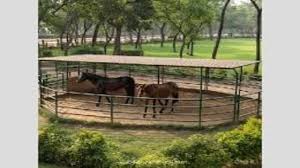
India’s has established and secured global recognition for its first Equine Disease-Free Compartment (EDFC).
- Equine Disease-Free Compartment is a scientifically managed, globally recognized area that guarantees horses are free from certain equine diseases, enabling them to engage in international trade and competitions.
- The EDFC operates under comprehensive Standard Operating Procedures (SOPs) encompassing disease exclusion protocols, pest control, physical security, hygiene, sanitation, animal health monitoring, waste management, and continuous surveillance, all aligned with international best practices.
- It is recognised by the World Organisation for Animal Health (WOAH).
- The facility is approved at the Remount Veterinary Corps (RVC) Centre & College, Meerut Cantonment, Uttar Pradesh.
- It is established under the Ministry of Fisheries, Animal Husbandry and Dairying.
- The EDFC has been officially declared free from Equine Infectious Anemia, Equine Influenza, Equine Piroplasmosis, Glanders, and Surra.
- India has historically remained free from African Horse Sickness since 2014.
- It marks a major step towards enabling the international movement of Indian sport horses in compliance with global biosecurity and animal health standards.
- With the implementation of robust biosecurity protocols, stringent veterinary surveillance, and adherence to international norms, Indian sport horses from this facility can now be eligible to travel and compete abroad.
- This significantly enhances the prospects of Indian riders and horses in global equestrian competitions and raises India’s profile in the international equestrian arena.
- The compartment also supports the broader development of horse-related activities in the country including sports, breeding, and high-value equine trade while strengthening India’s biosecurity and disease preparedness framework.
3 by 35 Initiative:
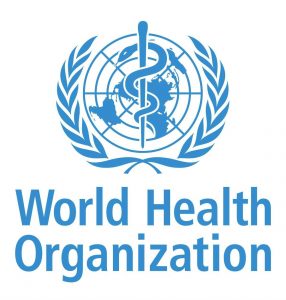
The World Health Organization (WHO) has launched a”3 by 35” initiative.
- It is an initiative urging countries to raise real prices on tobacco, alcohol and sugary drinks by at least 50 per cent by 2035.
- The initiative has an ambitious goal of raising US $1 trillion over the next 10 years.
- It aims to revitalize health taxes as a powerful tool to reduce harmful consumption, save lives, and generate vital public revenue.
- By implementing well-designed and effectively enforced taxes on these products, countries can mobilize significant domestic resources while advancing public health.
- The 3 by 35 Initiative has three key actions:
- Mobilizing countries– WHO and partners will engage heads of state, finance and health ministries, and civil society to build political momentum. Countries participating in the Initiative will benefit from peer learning, strategic support, and global recognition.
- Supporting country-led policies– Countries requesting assistance will receive direct support to develop tailored, evidence-based health tax policies. Others will benefit from a shared knowledge platform offering guidance, tools, and best practices.
- Building commitment and partnerships– Through inclusive dialogue and collaboration, the Initiative seeks to shift public and political perceptions, foster cross-sector alliances, and strengthen the role of civil society in advocating for sustainable health financing.
Tiruchendur Subramanya Swamy Temple:
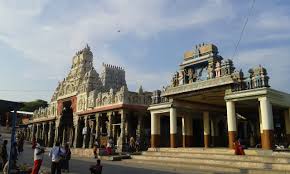
Thousands of devotees recently witnessed the grand consecration of the Subramanya Swamy temple in Tiruchendur, held after a gap of 16 years.
- Tiruchendur Subramanya Swamy Temple is a Hindu temple dedicated to Lord Murugan (Son of Lord Shiva and Goddess Parvati).
- It is located in Tiruchendur, Thoothukudi District, Tamil Nadu.
- It is one of the six sacred abodes of Lord Murugan and is the only one along the seashore. The other five temples are situated on mountains.
- The temple faces the Bay of Bengal and is washed by the sea waves from the Gulf of Mannar.
- Having stood for over 2 millennia, the temple is a splendid example of Tamil architecture.
- The temple is constructed with red sandstone and presents a panoramic view of the sea.
- The RajaGopuram (temple tower) is built on the western side of the temple, unlike other temples where the RajaGopuram is erected on the eastern side, the reason being that the sea is very close to the eastern side.
- The Gopuram is nine-tier that is 138 feet high. The sanctum sanctorum of the temple has Lord Subramanyam in a standing posture.
- There are nine Kalasams (sacred copper pots) atop the Gopuram to indicate that the Gopuram consists of 9 storeys.
- The temple also boasts of many other stunning architectural features, like huge mandapams (halls), long streets, majestically carved pillars, and a number of small shrines.
National Overseas Scholarship (NOS) Scheme:
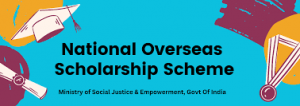
The Union Social Justice Ministry is in the process of seeking additional allocation for administering the National Overseas Scholarship scheme for marginalised students.
- It is a Central Sector Scheme to facilitate the low-income students from marginalized communities, including the Scheduled Castes (SC), Denotified Nomadic and Semi-Nomadic Tribes, Landless Agricultural Labourers, and Traditional Artisans, to obtain higher education, , Master degree or Ph.D courses, by studying abroad.
- The scheme is administered by the Ministry of Social Justice & Empowerment.
- Under the NOS Scheme, each selection year, 125 fresh candidates are selected, subject to the availability of funds.
- Out of the 125 candidates who are awarded scholarships, 115 are for SC candidates, 6 for Denotified, Nomadic and Semi-Nomadic Tribes, and 4 are for Landless Agricultural Labourers candidates and Traditional Artisans.
- 30% of the scholarships for each year are earmarked for female candidates.
- The applicant should be less than 35 years of age on 1st April of the selection year.
- The applicant must have been admitted to or received an unconditional offer of admission for pursuing a master’s/Ph.D. from an institute/university located abroad.
- The institute/university of the applicant must be accredited by the Government/authorized body of that country.
- The applicant must have secured at least 60% marks or equivalent grade in the qualifying examination (In the case of Ph.D. courses, the qualifying exam is a Master’s Degree; In the case of a Master’s Degree, the qualifying exam is a Bachelor’s Degree)
- The total income of the family of the applicant (from all sources) is less than or equal to ₹ 8 lakh per annum.
Japonica Rice:
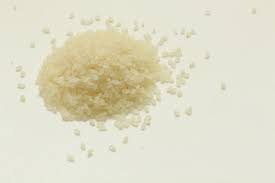
Scientists at the Delhi-based National Institute of Plant Genome Research (NIPGR) have used CRISPR-Cas9 gene editing technology to increase phosphate uptake and transport in japonica rice varieties.
- Japonica is one of the two major eco-geographical races of O. sativa(O. sativa japonica), the other is Indica.
- It is a group of rice varieties from northern and eastern China grown extensively in some areas of the world.
- It is an Asian rice variety that belongs within the broader sinica rice family.
- It is characterized by its short to medium grain and is harder, thicker, and stickier than traditional white rice.
- Japonica grains are short, roundish, spikelets are awnless to long-awned, grains do not shatter easily, and have 0-20% amylose content.
- It includes several varieties, including the sushi rice and glutinous rice, which despite its name, is entirely gluten free.
- It is found in the cooler zones of the subtropics and in the temperate zones.
- It is the primary type of rice grown and consumed in Japan and also in China, Korea, Vietnam, Indonesia.
- The different varieties of Japonica are called cultivars. Each Japonica rice cultivar has been developed to exhibit unique qualities, making them suitable for various culinary uses and growing conditions.
Sheesh Mahal : Restored
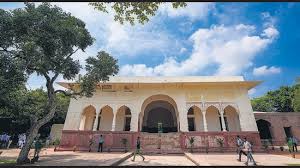
A Mughal-era palace, Sheesh Mahal, located in Shalimar Bagh, North Delhi, was restored and unveiled by the Union Culture and Tourism minister.
- Sheesh Mahal was built in 1653 by Izz-un-Nisha Begum, wife of Mughal Emperor Shah Jahan.
- This monument was a tribute and a replica of the Shalimar Bagh in Kashmir.
- It is a fine example of Mughal garden architecture designed to be a royal retreat away from Shahjahanabad’s bustle.
- Originally constructed of bricks and red sandstone, with entry gates in the east and west, the palace has an archway, flanked on either side by a three-arched dalan.
- Beyond the archway is a central hall with a compartment at each wing.
- The main building of the Sheesh Mahal had a Baradari with a water channel running through it.
- The paintings in two of its well maintained , mirror-worked chambers are of Kangra and Rajasthani qalam, depicting the poetic visions of Keshav, Surdas and Bihari.
- The red sandstone building adjacent to the Mahal is believed to have been used as hamam (public bathhouse), made of brick masonry and red sandstone.
Prime Minister Narendra Modi’s visit to Trinidad and Tobago:
Prime Minister Narendra Modi’s visit to Trinidad and Tobago, marked the first Indian Prime Ministerial visit since 1999. Trinidad and Tobago is located in the southeastern West Indies (Caribbean) and comprises two main islands Trinidad and Tobago, along with several smaller islands.
It lies northeast of Venezuela and northwest of Guyana, separated from Venezuela by the Gulf of Paria and narrow channels. During the visit, he was conferred with the country’s highest civilian honour, The Order of the Republic of Trinidad and Tobago, for his global leadership, strong diaspora engagement, and humanitarian efforts during the Covid-19 pandemic.
International Day of Cooperatives:
As India celebrates the International Day of Cooperatives (5th July, 2025) and marks four years of the Ministry of Cooperation, the focus is on harnessing the potential of cooperatives and MSMEs, especially through initiatives like the PM Vishwakarma scheme to empower artisans and promote inclusive economic growth.
Birth Anniversary of Dr. Syama Prasad Mookerjee:
Prime Minister Narendra Modi paid tribute to Dr. Syama Prasad Mookerjee on his birth anniversary (6th July) highlighting his legacy in national unity, industrial policy, and education, and his relevance in India’s modern development.Born in Calcutta (now Kolkata). Dr. Mookerjee is the son of Sir Ashutosh Mookerjee, a renowned educationist and Vice-Chancellor of Calcutta University. Dr. Mookerjee represented Calcutta University at the Conference of the Universities of the British Empire in England. Dr. Mookerjee became the youngest Vice-Chancellor of Calcutta University at the age of 33 in 1934. He started “Bang Wani”, a Bengali journal, in 1922 and The Nationalist in the 1940s. In the 1920s, Dr. Mookerjee joined the Indian National Congress but resigned later over ideological differences with the leadership. He later joined the Hindu Mahasabha and played a key role in forming a Progressive Coalition government in Bengal in 1937, where he served as the Finance Minister. Became the acting President of the Hindu Mahasabha in 1940 and advocated for complete independence for India. He founded the All India Bharatiya Jan Sangh in 1951, which later evolved into the Bharatiya Janata Party.
Helgoland:
Physicists treat Helgoland as the birthplace of quantum theory.Helgoland is a speck of red-sandstone cliffs lies in the German Bay (Deutsche Bucht) of the North Sea. It is barely a square kilometre in area, it was once a naval fortress. Physicists today treat Helgoland as the birthplace of quantum theory.Werner Heisenberg, 23 and tormented by hay fever in Göttingen, fled to Helgoland. He dropped the idea of electrons ‘orbiting’ an atom’s nucleus in favour of only those facts that fit experimental data: the frequencies and strengths of the light atoms absorb or emit. To keep track of those numbers, he arranged them in grids called matrices. When he multiplied the grids, the order mattered: position times momentum was not equal to momentum times position.
Magnus Carlsen Wins SuperUnited Chess 2025:
Magnus Carlsen, the world’s top chess player, has won the SuperUnited Rapid and Blitz 2025 tournament held in Zagreb, Croatia. He secured the title on July 7, 2025, with one round to spare. The event is part of the Grand Chess Tour and brings together top chess players from around the world. This win shows Carlsen’s strong form, while India’s D Gukesh also impressed by finishing third.
Kerala’s First Skin Bank to Open in Thiruvananthapuram:
Kerala’s first skin bank will be launched on July 15, 2025, at the Thiruvananthapuram Government Medical College Hospital (MCH). This special facility will store donated skin and help treat burn victims. It is an important step to improve healthcare and offer better treatment to people with severe burns.The skin bank is being set up at Thiruvananthapuram MCH, and it will be the first of its kind in Kerala. It will be inaugurated on July 15, which is also World Plastic Surgery Day. The total cost of setting up the bank is Rs 6.75 crore. The bank will collect skin donations from people, which can later be used to treat people with serious burns. Donated skin helps reduce pain, risk of infection, and improves healing for burn patients.
India’s banks saw a big rise in extra funds:
The liquidity surplus in India’s banking system jumped to over ₹4 trillion, the highest in more than two years. This was mainly due to increased government spending and a large surplus transfer by the Reserve Bank of India (RBI). The RBI also received a strong response to its seven-day Variable Rate Reverse Repo (VRRR) auction, showing banks’ interest in short-term operations. This news is important as it affects lending, borrowing, and interest rates in the country.
Govt Partners with Sri Aurobindo Society to Support Inclusive Education:
The Department of Empowerment of Persons with Disabilities (DEPwD) signed an MoU with the Sri Aurobindo Society (SAS) in New Delhi. The agreement aims to promote inclusive education for children with disabilities by providing training and useful tools to teachers and education workers. This step supports the goals of the Rights of Persons with Disabilities (RPwD) Act, 2016.The MoU is part of a special project called ‘Project Inclusion’, which will be run by Sri Aurobindo Society through its Rupantar Programme. The project will offer training programs through a mobile app and a website, making it easier for teachers, school counselors, and education workers to learn how to support children with disabilities in regular schools
RBI Financial Stability Report, June 2025:
India stands out as a beacon of stability and growth. The Reserve Bank of India’s latest Financial Stability Report (FSR), released in June 2025, paints a detailed picture of an economy that is not only expanding but doing so with remarkable strength across its financial sectors. While external risks from geopolitical tensions and trade disruptions are mounting, India’s robust domestic demand, cooling inflation, and a well-capitalised banking system provide a powerful shield, making it the world’s fastest-growing major economy.This deep dive explores the key findings of the FSR, providing a comprehensive overview of the Indian economy’s performance, the resilience of its financial institutions, and the outlook for the future.
RCB Becomes IPL’s Most Valuable Team in 2025:
The Indian Premier League (IPL) has seen a major rise in value this year. A report by Houlihan Lokey shows that IPL’s enterprise value grew by 12.9%, reaching $18.5 billion. The big highlight was Royal Challengers Bengaluru (RCB) becoming the highest-valued franchise at $269 million, after winning their first-ever IPL title in 2025.
RBI to Auction Government Bonds Worth ₹25,000 Crore:
The Reserve Bank of India (RBI) will hold an auction of two government bonds worth ₹25,000 crore on July 11, 2025. This auction will take place through RBI’s e-Kuber platform at its Mumbai office. These types of bonds are known as dated securities, and they help the government raise money for long-term needs.
According to the RBI, the auction will include:
- A new government bond (called Government Security or GS) worth ₹11,000 crore, maturing on July 14, 2032.
- A re-issue of an older bond—7.09% GS, maturing on November 25, 2074, worth ₹14,000 crore.
- The government may also accept ₹2,000 crore more in extra subscriptions for each bond, depending on the demand. The settlement (payment and issue of bonds) will happen on July 14, 2025.
Haryana to Build Asia’s Biggest Jungle Safari:
The Haryana government has announced that it will build Asia’s largest jungle safari in the Aravalli Hills. The project was shared on July 6, 2025, and it will cover around 10,000 acres of forest land. The main goal is to protect animals and nature, while also boosting tourism and creating new jobs for people. This is an important step for both environmental conservation and eco-tourism in India.The planned jungle safari will be the largest in Asia, spread over 10,000 acres in the Aravalli Hills of Haryana. It will have many types of animals, birds, and plants, all kept safe in their natural homes. The safari will use modern technology and will be built in a green, eco-friendly way. This means care will be taken to not harm the forests, animals, or local people.
Neeraj Chopra Wins First Neeraj Chopra Classic in Bengaluru:
Olympic champion Neeraj Chopra won the first-ever Neeraj Chopra Classic 2025, held at the Sree Kanteerava Stadium in Bengaluru. The event took place yesterday evening and is part of the World Athletics Gold-level series. Neeraj won the title with a throw of 86.18 metres, continuing his top form in international javelin competitions. The Neeraj Chopra Classic is a new athletics event named after the Indian javelin hero himself. It is part of the World Athletics Gold-level series, making it one of the top-tier athletics competitions globally. Hosting this event in India marks a big step forward in promoting track and field sports in the country. The event not only honored Neeraj’s legacy but also gave Indian fans a chance to see world-class athletes in action live.




